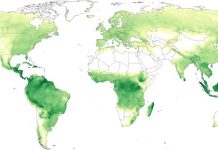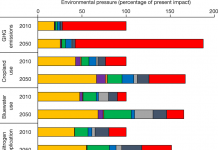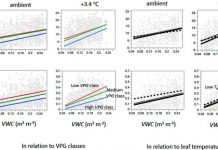【土壤微生物群落与麋鹿觅食强度】Lauren C. Cline1* Donald R. Zak23 Rima A. Upchurch2 Zachary B. Freedman4 and Anna R. Peschel5. Soil microbial communities and elk foraging intensity: implications for soil biogeochemical cycling in the sagebrush steppe. Ecology Letters
Abstract
Foraging intensity of large herbivores may exert an indirect top-down ecological force on soil microbial communities via changes in plant litter inputs. We investigated the responses of the soil microbial community to elk (Cervus elaphus) winter range occupancy across a long-term foraging exclusion experiment in the sagebrush steppe of the North American Rocky Mountains combining phylogenetic analysis of fungi and bacteria with shotgun metagenomics and extracellular enzyme assays. Winter foraging intensity was associated with reduced bacterial richness and increasingly distinct bacterial communities. Although fungal communities did not respond linearly to foraging intensity a greater β-diversity response to winter foraging exclusion was observed. Furthermore winter foraging exclusion increased soil cellulolytic and hemicellulolytic enzyme potential and higher foraging intensity reduced chitinolytic gene abundance. Thus future changes in winter range occupancy may shape biogeochemical processes via shifts in microbial communities and subsequent changes to their physiological capacities to cycle soil C and N.
【土壤生物地球化学循环】Robert W. Buchkowski1* Mark A. Bradford1 Andrew Stuart Grandy2 Oswald J. Schmitz1 and William R. Wieder34. Applying population and community ecology theory to advance understanding of belowground biogeochemistry. Ecology Letters
Abstract
Approaches to quantifying and predicting soil biogeochemical cycles mostly consider microbial biomass and community composition as products of the abiotic environment. Current numerical approaches then primarily emphasise the importance of microbe–environment interactions and physiology as controls on biogeochemical cycles. Decidedly less attention has been paid to understanding control exerted by community dynamics and biotic interactions. Yet a rich literature of theoretical and empirical contributions highlights the importance of considering how variation in microbial population ecology especially biotic interactions is related to variation in key biogeochemical processes like soil carbon formation. We demonstrate how a population and community ecology perspective can be used to (1) understand the impact of microbial communities on biogeochemical cycles and (2) reframe current theory and models to include more detailed microbial ecology. Through a series of simulations we illustrate how density dependence and key biotic interactions such as competition and predation can determine the degree to which microbes regu







